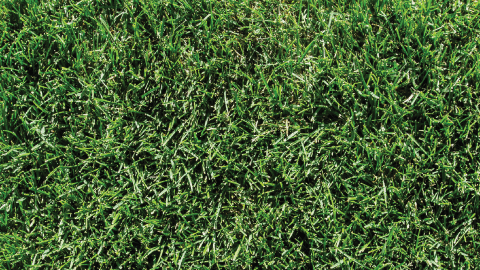In this guide to Kentucky Bluegrass, we'll discuss everything from cost to best mowing height while also looking at the pros and cons. By the end, you'll be perfectly positioned to know whether it's the right sod type for you.
Let's Start from the Top: What Is Kentucky Bluegrass?
Kentucky Bluegrass, scientifically known as Poa pratensis, is a perennial, cool-season grass that is native to Europe, Asia, and North Asia. We predominantly see this sod variety in various regions of the United States, where it is widely used for lawns, parks, and athletic fields. (See all sod types here).
One of the defining characteristics of Kentucky Bluegrass is its rich, green color. This vibrant hue makes it an appealing choice for many landscapes. The leaves of this grass are fine-textured with a boat-shaped tip, giving it a distinctive and recognizable appearance.
Kentucky Bluegrass grows through a combination of rhizomes and seeds. Rhizomes are underground stems that allow the grass to spread and create a dense sod, while the seeds help ensure genetic diversity within the species. This method of growth makes it a tough and durable grass that can withstand varying levels of foot traffic and environmental conditions.
Given its adaptability and low maintenance requirements, Kentucky Bluegrass has become a popular grass choice for many areas in the United States. Its ability to thrive in various soil types, tolerate both heat and cold, and recover quickly from damage makes it an ideal choice for homeowners and commercial property managers alike.
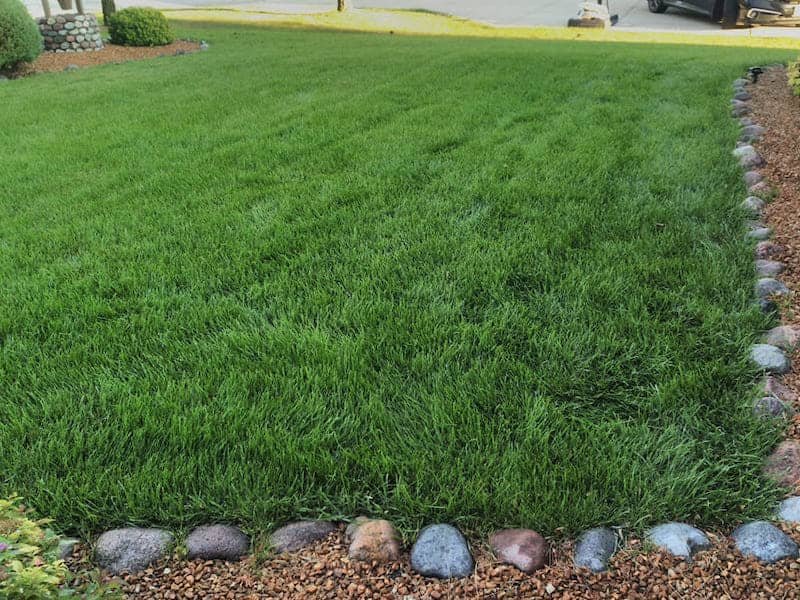
Is Kentucky Bluegrass a Good Grass to Grow?
As we delve into the topic of Kentucky Bluegrass, we must first assess whether it's a good grass to grow. Kentucky Bluegrass is a popular choice for many lawns and landscapes due to its distinct characteristics. Some of the key reasons for its popularity include:
Adaptability: Kentucky Bluegrass is adaptable to various soil types and climates. Although it thrives in well-drained soils and moderate temperatures, it can also grow in other conditions with proper care and maintenance. This adaptability makes it suitable for a wide range of environments.
Attractive Appearance: This type of grass has a fine texture and a rich green color which presents an aesthetically appealing lawn. The dense, carpet-like growth pattern offers a pleasing look to any landscape.
Drought Tolerance: Although Kentucky Bluegrass prefers consistent moisture, it can go dormant during periods of drought and will recover once adequate moisture is available. This drought tolerance makes it a resilient choice for areas prone to dry spells.
Disease Resistance: Kentucky Bluegrass has moderate resistance to common lawn diseases such as leaf spot and rust. By selecting improved cultivars, we can further enhance this resistance which helps maintain a healthy and lush lawn.
However, it's essential to be aware of certain challenges that come with growing Kentucky Bluegrass:
Maintenance Requirements: This grass type does require regular maintenance, including mowing, irrigation, and fertilizing to maintain its optimal appearance and health. Neglecting these tasks may result in a less appealing lawn.
Cold Tolerance: While Kentucky Bluegrass can tolerate cold temperatures, it may struggle in regions with harsh winters. In such cases, mixing it with other grass types like fine fescues or perennial ryegrass can help improve its cold tolerance and overall performance.
Shade Tolerance: It is worth noting that Kentucky Bluegrass thrives in full sun. In shaded areas, its growth might be less vigorous. If shade is a concern in your landscape, you might consider mixing it with grasses that have better shade tolerance.
In summary, we believe that Kentucky Bluegrass is a good grass to grow for lawns and landscapes considering its adaptability, attractive appearance, and resilience. However, we recommend taking into account its maintenance requirements, cold and shade tolerance when deciding if it's the best choice for your specific needs.
Facts and Features of Bluegrass
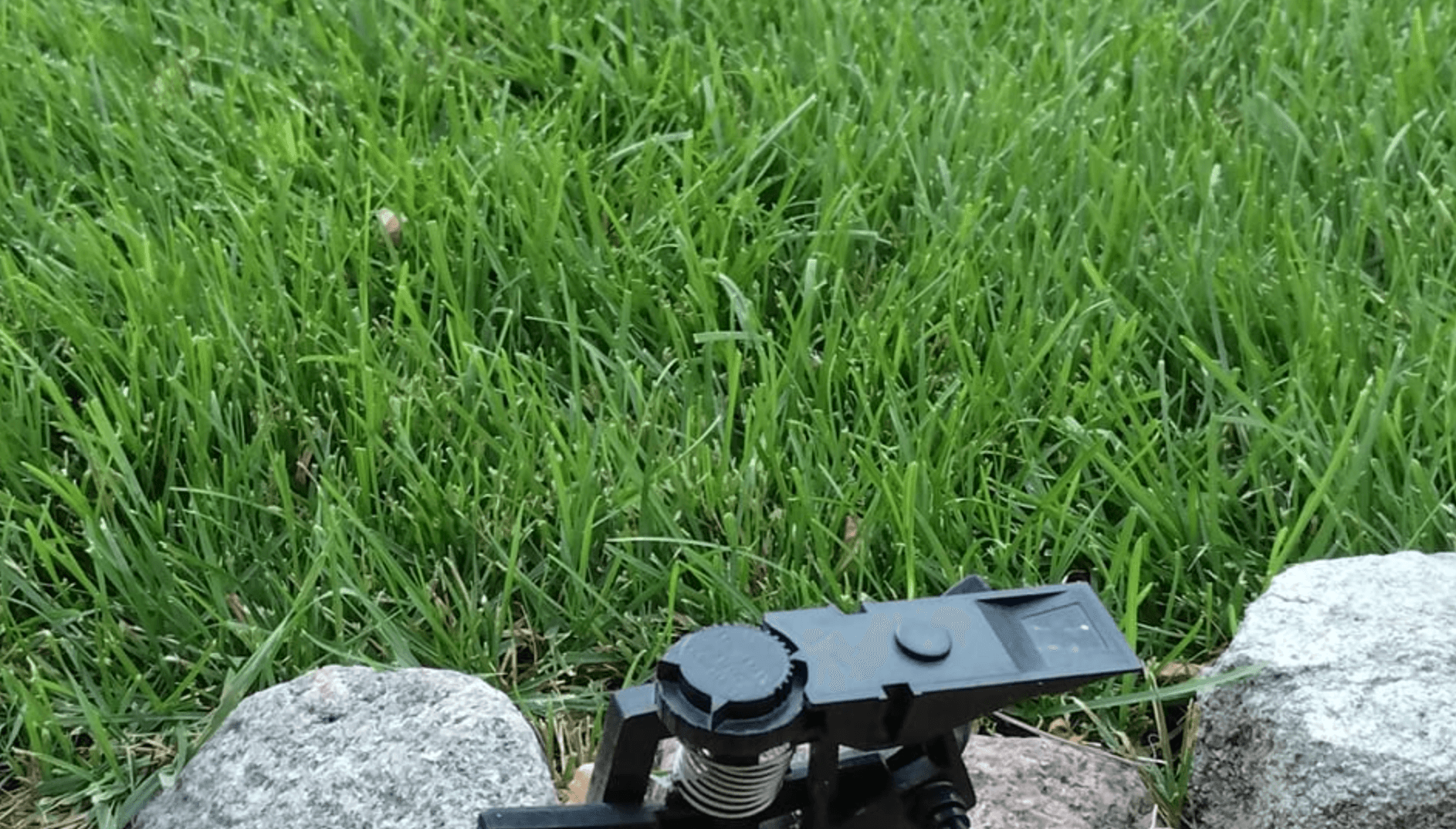
Appearance and Growth Habits
Kentucky Bluegrass (Poa pratensis L.) is one of the most popular cool-season grasses known for its dense, fine texture and attractive appearance. The leaves are smooth and boat-shaped at the apex, while the panicle seed head is shaped like a pyramid. We can identify Kentucky Bluegrass by its signature blue-green color and its tendency to grow in dense mats, thanks to its aggressive rhizomes.
Rapid Growth and Spreading
The vigorous rhizomes of Kentucky Bluegrass enable it to spread rapidly and efficiently. This self-spreading ability allows for quick establishment of lush lawns and helps with recuperation from damage caused by traffic, weather conditions, or pest infestation. This characteristic also makes it a popular choice for turf applications.
Soil Types and Sunlight Preferences
While Kentucky Bluegrass is quite adaptable to different soils, it performs best in well-draining soils with a pH between 6.0 and 7.0. Soil testing and amendments may be necessary if your soil pH levels are significantly different. As mentioned earlier, Kentucky Bluegrass prefers full sun but can tolerate some shade. However, it's important to ensure adequate sunlight for optimum growth, because shade-tolerance does not equate to optimal shade performance for this grass type. Keep in mind that watering needs may vary depending on the amount of sun and shade your lawn receives.
How to Lay Bluegrass Sod
When it comes to laying Kentucky Bluegrass sod, there are a few important factors to consider. We'll discuss the appropriate time of year, preparing your yard, and the cost involved.
First, let's talk about the best time of year to lay sod. Ideally, the optimal time for laying Kentucky Bluegrass sod is during the cooler months, typically in the spring or fall. This allows for the sod to establish a strong root system while avoiding the harsh heat of the summer.
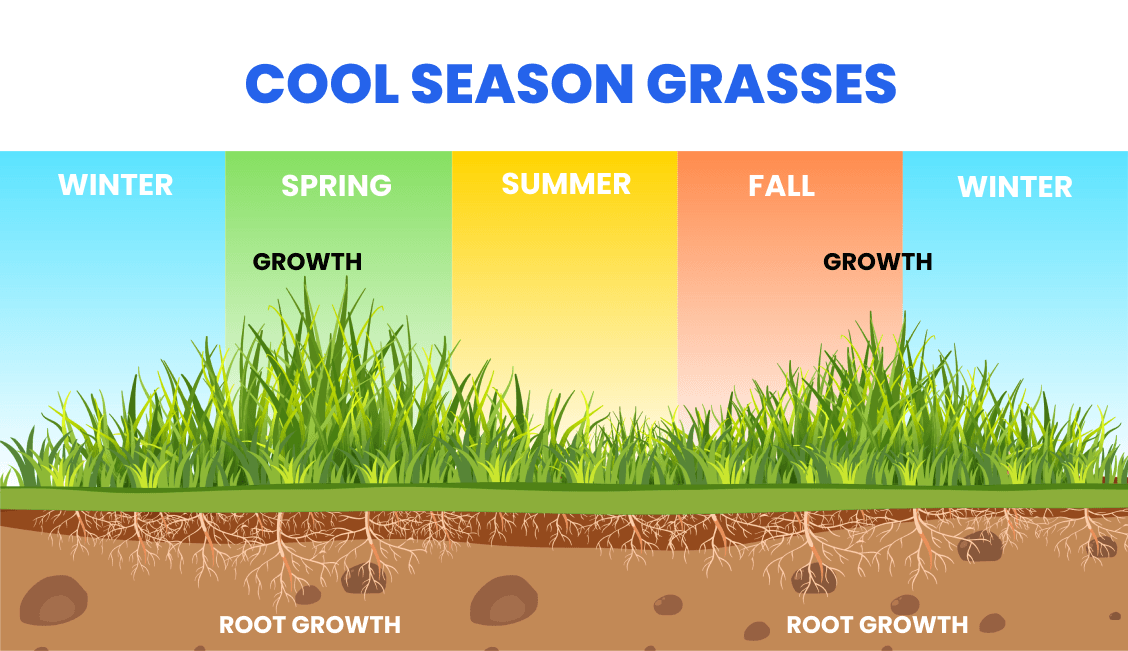
To prepare your yard for the sod, we recommend that the soil is turned and leveled, removing any rocks, roots or debris. It's also a good idea to add a layer of topsoil to provide a nutrient-rich base for the sod to thrive.
Laying the Kentucky Bluegrass sod is a straightforward process. We advise starting from one end of your yard, unrolling the sod and laying it end-to-end, staggering the seams like bricks. Make sure to press the sod firmly against the ground, eliminating air pockets, and ensuring good contact with the soil.
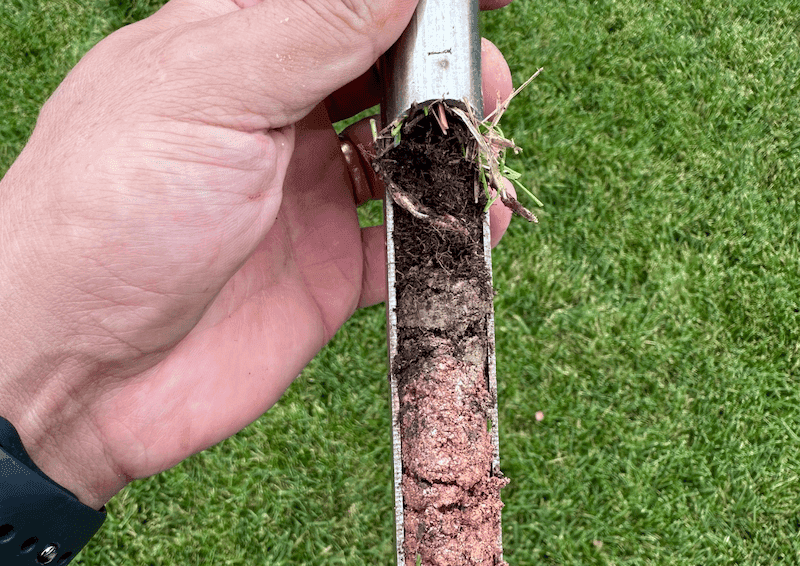
In terms of cost, Kentucky Bluegrass sod can range from $0.35 to $0.85 per square foot, not including the cost of delivery or installation. Keep in mind that extra expenses may arise depending on the size of your yard and any additional yard preparation required.
To help your new Kentucky Bluegrass sod succeed, we suggest consistent watering for the first few weeks to keep the soil moist, as this promotes root growth. Gradually reduce the frequency of watering as the grass roots take hold, transitioning to a regular watering schedule appropriate for your climate and the needs of your lawn.
By following these guidelines, you'll be well on your way to a lush, green Kentucky Bluegrass lawn that will not only be visually appealing but also more resistant to disease, drought, and other environmental stressors.
Care & Maintenance Tips
Establishment and Planting
In order to establish a healthy Kentucky Bluegrass lawn, we recommend planting in the early fall or late summer. This allows the grass time to grow strong roots before winter dormancy. It is also possible to plant in the spring, but be aware that it may require more water and care during the establishment period.
Watering Practices
Watering is a crucial aspect of Kentucky Bluegrass maintenance. To promote water efficiency, we suggest using a combination of deep, infrequent watering and monitoring rainfall. Aim for about 1 inch of water per week, either from rain or supplemental irrigation. This encourages deeper root growth, which leads to a more drought-resistant lawn.
Fertilization Schedule
A proper fertilization schedule is essential for a vibrant Kentucky Bluegrass lawn. We advise using a nitrogen-based fertilizer, applying it at a rate of 1 pound of nitrogen per 1,000 square feet. The ideal schedule for nitrogen fertilization is:
Early spring
Late spring
Late summer
Early fall
Mowing Guidelines
Mowing is an important part of lawn care for Kentucky Bluegrass, with the optimal mowing height being 2.5 to 3 inches. Maintaining this height encourages a thick, dense turf and promotes weed tolerance. Be sure to keep lawn mower blades sharp for clean cuts, which minimize the potential for disease.
Weed and Pest Management
To prevent weed and pest issues in your Kentucky Bluegrass lawn, consider implementing an integrated pest management program. This includes proper establishment, fertilization, and mowing practices, as well as using appropriate herbicides for crabgrass and other weeds. Additionally, monitor your lawn for insect pests and take action when necessary.
Thatch Control and Aeration
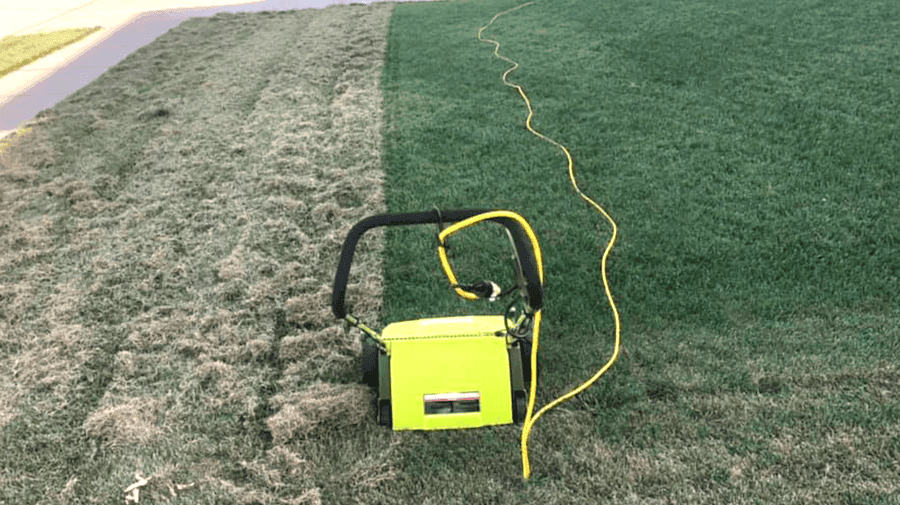
Thatch control and aeration play a vital role in maintaining a healthy Kentucky Bluegrass lawn. We recommend performing core aeration once every one to three years, depending on soil compaction and thatch levels. This practice improves water, air, and nutrient penetration into the soil, which in turn benefits your lawn's overall health.
Winter Care (If Applicable)
In northern climates, Kentucky Bluegrass demonstrates good winter hardiness. However, we suggest taking a few precautions to minimize winter damage, such as avoiding excessive foot traffic and keeping the lawn relatively clean of fallen leaves or debris. Be vigilant for snow mold diseases and treat them if needed.
Pros & Cons
Kentucky Bluegrass is a popular cool-season grass known for its beautiful appearance and impressive durability. We will be discussing both the pros and cons of this grass species to help you make an informed decision on whether it's the right choice for your lawn or landscape.
Level Up Your Lawn Skills
Once per week we'll send you an interview from someone who has mastered the art of lawn care.
Pros:
Appearance: Kentucky Bluegrass has a rich, dark blue-green color with fine-textured blades, which makes it a popular choice for lawns and landscapes seeking a lush, attractive appearance.
Resilience: This grass species is known for its ability to withstand traffic, making it an excellent option for sports fields, parks, and homes with pets or children. It also recovers well from damage thanks to its strong rhizomes that spread rapidly and form a dense turf.
Cold Tolerance: As a cool-season grass, Kentucky Bluegrass thrives in colder climates and maintains its vibrant color through most of the year, unlike some warm-season grasses that tend to go dormant in cooler temperatures.
Cons:
Water Efficiency: Kentucky Bluegrass does require more water than some other grass species, making it less water-efficient. This may not be the best option for areas with water restrictions or those looking to limit their water usage.
Drought Tolerance: While it can survive short periods of drought by going dormant, extended periods without rainfall or irrigation can cause significant damage to Kentucky Bluegrass. It needs regular watering to maintain its health and appearance.
Shade Tolerance: It is not very shade-tolerant; it requires plenty of sunlight to thrive. Therefore, if you have a lot of trees or shade-providing structures on your property, this grass may struggle to grow to its full potential.
In summary, Kentucky Bluegrass can provide a visually stunning and resilient turf for your landscape, particularly in cooler climates. However, it's essential to weigh its water requirements and lack of shade tolerance when considering this grass species.
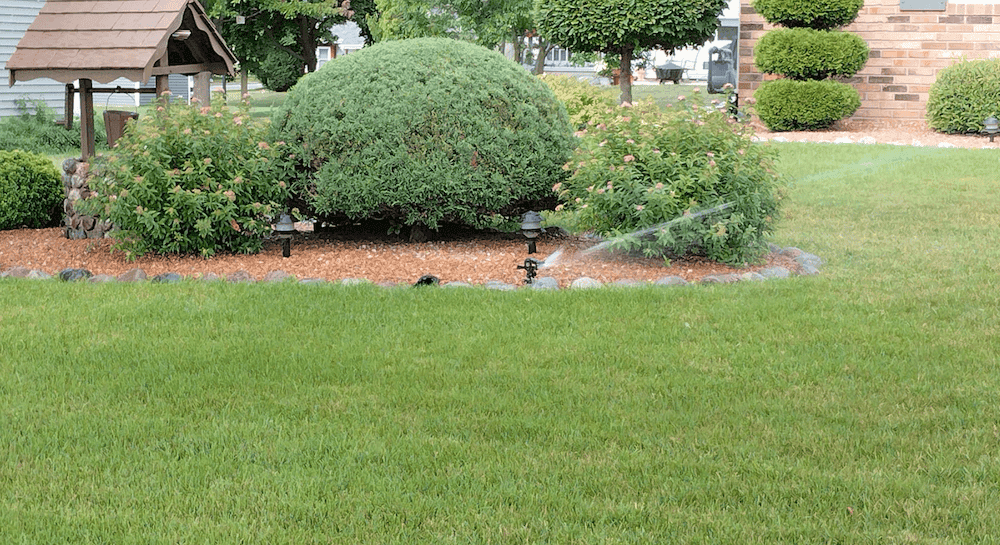
When Should You Plant Kentucky Bluegrass?
When planting Kentucky bluegrass, timing is crucial for successful establishment and growth. Generally, the best time for planting is during the early fall. This period allows the seeds to germinate and establish a healthy root system before the cold winter months arrive. Additionally, the cool temperatures and increased moisture in the fall encourage optimal growth conditions for Kentucky bluegrass.
If planting in the late summer, it is essential to keep a close eye on the weather. Sudden temperature spikes can cause stress to the newly sprouted grass, making it vulnerable to pests and diseases. To help prevent these issues, we recommend monitoring soil moisture and providing irrigation as needed. This will ensure the young grass receives adequate water supply during its establishment stage.
Here are some factors to consider when planting Kentucky bluegrass:
Soil temperature: Aim for a consistent soil temperature range of 50-65°F (10-18°C) to provide the best germination environment. This range typically occurs in early fall or late summer.
Sunlight: Kentucky bluegrass prefers full sun, so choose a planting location with ample exposure to sunlight. This will ensure vigorous growth and a lush, green appearance.
Irrigation: Newly planted Kentucky bluegrass requires consistent moisture to establish a strong root system. Be prepared to water more frequently during the first few weeks after planting.
With proper timing, attention to weather conditions, and adequate care, your Kentucky bluegrass lawn should thrive and provide a beautiful, resilient ground cover.
The Best Varieties
As experts in the turfgrass industry, we know that Kentucky bluegrass is highly valued for its rich color, fine texture, and remarkable resilience. Due to these desirable qualities, numerous cultivars have been developed to suit a variety of applications and environments. In this section, we will discuss some of the popular Kentucky bluegrass varieties.
Midnight Kentucky Bluegrass is a top choice for many due to its exceptional color, dense growth, and resistance to diseases. Its deep blue-green hue sets it apart from other cultivars, while its fine texture and quick establishment make it a perfect choice for new lawns or overseeding existing ones.
Moonlight Kentucky Bluegrass is another popular variety, known for its rapid establishment and recuperative ability. This cultivar thrives under moderate shade conditions and exhibits excellent resistance to diseases like leaf spot and stem rust. Also, Moonlight is a top performer in stress tolerance, making it an ideal option for low-maintenance lawns.
Thermal Blue is a hybrid cultivar that combines the qualities of Kentucky bluegrass and Texas bluegrass, resulting in a more heat-tolerant grass. This variety is an excellent choice for those who reside in warmer regions where traditional Kentucky bluegrass may struggle. It also boasts fine texture, rich color, and resistance to billbugs and other turf-damaging pests.
We must also mention Barvette HGT, which excels in traffic tolerance and durability. This cultivar is an excellent choice for sports fields or high-use recreational areas. Barvette HGT features quick germination, rapid establishment, strong wear resilience, and recovery from damage.
Each of these Kentucky bluegrass varieties offers unique benefits that make them well-suited for different needs and preferences. When selecting the right cultivar for your lawn, consider factors like climate, soil type, and intended use. By choosing an appropriate variety, you can enjoy a lush, healthy, and beautiful turf that will certainly stand out in your neighborhood.

Final Thoughts
We find Kentucky Bluegrass to be an excellent choice for a beautiful, lush lawn. This versatile grass species thrives in a wide range of weather conditions and soil types, making it suitable for various landscaping projects.
Proper maintenance is crucial for sustaining the health and appearance of Kentucky Bluegrass. We recommend regular mowing, watering, and fertilizing to keep the lawn green and resistant to pests and diseases.
Mowing: Keep the grass height around 3 to 4 inches as this promotes deeper root growth and improves overall turf health. During the cooler months, we suggest mowing less frequently.
Watering: Provide a weekly soaking of about 1 to 1.5 inches of water, which encourages deep root development. This could be adjusted depending on seasonal precipitation.
Fertilizing: Apply a balanced fertilizer, preferably in spring and fall, to support adequate growth and create a dense, healthy turf.
Adapting to local weather conditions is essential to the success of your Kentucky Bluegrass lawn. A well-drained soil is crucial for its growth, and understanding the climatic preferences of the grass helps assure a thriving lawn.
In conclusion, Kentucky Bluegrass offers a beautiful and resilient turf option for various landscapes. Combining proper maintenance and adaptability to weather conditions will ensure a lush and inviting lawn for many years to come.
Frequently Asked Questions
How often should Kentucky Bluegrass be watered?
We recommend watering Kentucky Bluegrass deeply, at least 1-2 inches every week during the growing season. During dry periods or extreme heat, you may need to water more frequently to maintain its vibrant green color. We suggest watering early in the morning, as it allows the water to penetrate the soil before the sun evaporates it.
Which is the best Kentucky Bluegrass seed variety?
While there are many excellent Kentucky Bluegrass seed varieties, some of the top options include Midnight, Award, Moonlight, and Blue Note. Each variety offers slightly different characteristics in terms of color, growth rate, and disease resistance. We advise researching and selecting a variety that best suits your specific lawn requirements.
What is the growth rate of Kentucky Bluegrass?
Kentucky Bluegrass typically has a moderate growth rate. Under optimal conditions, it may take 14-30 days to germinate, and an additional 4-6 weeks to establish a healthy, lush lawn. Proper maintenance, such as watering, mowing, and fertilizing, can help ensure that your Kentucky Bluegrass grows consistently.
What makes Kentucky Bluegrass stand out?
Kentucky Bluegrass stands out due to its rich blue-green color, fine-bladed texture, and ability to self-repair, which creates a dense sod. Additionally, it is highly adaptable and can withstand a variety of weather conditions, making it an ideal choice for most lawns.
What are the optimal conditions for Kentucky Bluegrass growth?
To achieve the best growth, Kentucky Bluegrass prefers a soil pH between 6.0 and 7.0, full sun exposure, and consistent moisture. The average temperature for optimal growth ranges from 60 to 75°F (15 to 24°C). Cooler climates are generally suitable as it is a cool-season grass, but harder to establish in warmer areas.
How do you properly plant Kentucky Bluegrass?
For best results, we suggest preparing the soil by removing any rocks, debris, and weeds, then loosening it with a tiller or garden fork. Level the soil and apply a high-quality starter fertilizer, followed by evenly scattering the seed. Lightly rake the area to ensure seed-to-soil contact and water deeply. Keep the soil consistently moist until your new grass is well-established.
Kentucky Bluegrass versus other types of sod
- Kentucky Bluegrass vs. Bermuda comparison →
- Kentucky Bluegrass vs. Buffalo comparison →
- Kentucky Bluegrass vs. Zoysia comparison →
- Kentucky Bluegrass vs. Tall Fescue comparison →
- Kentucky Bluegrass vs. Perennial Ryegrass comparison →
- Kentucky Bluegrass vs. St. Augustine comparison →
- Kentucky Bluegrass vs. Centipede comparison →
- Kentucky Bluegrass vs. Fine Fescue comparison →
- Kentucky Bluegrass vs. Bahia comparison →
Level Up Your Lawn Skills
Once per week we'll send you an interview from someone who has mastered the art of lawn care.

